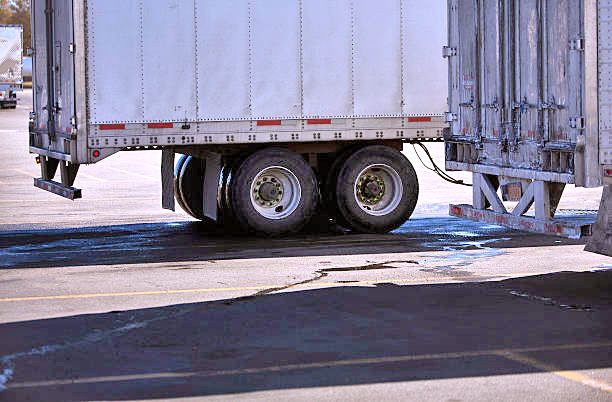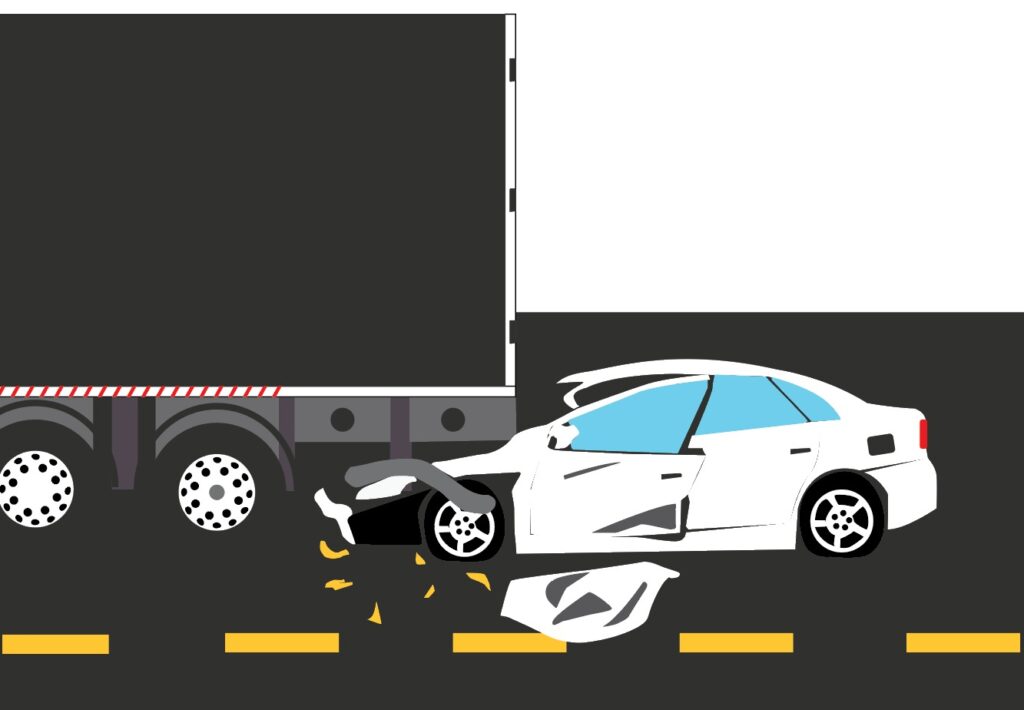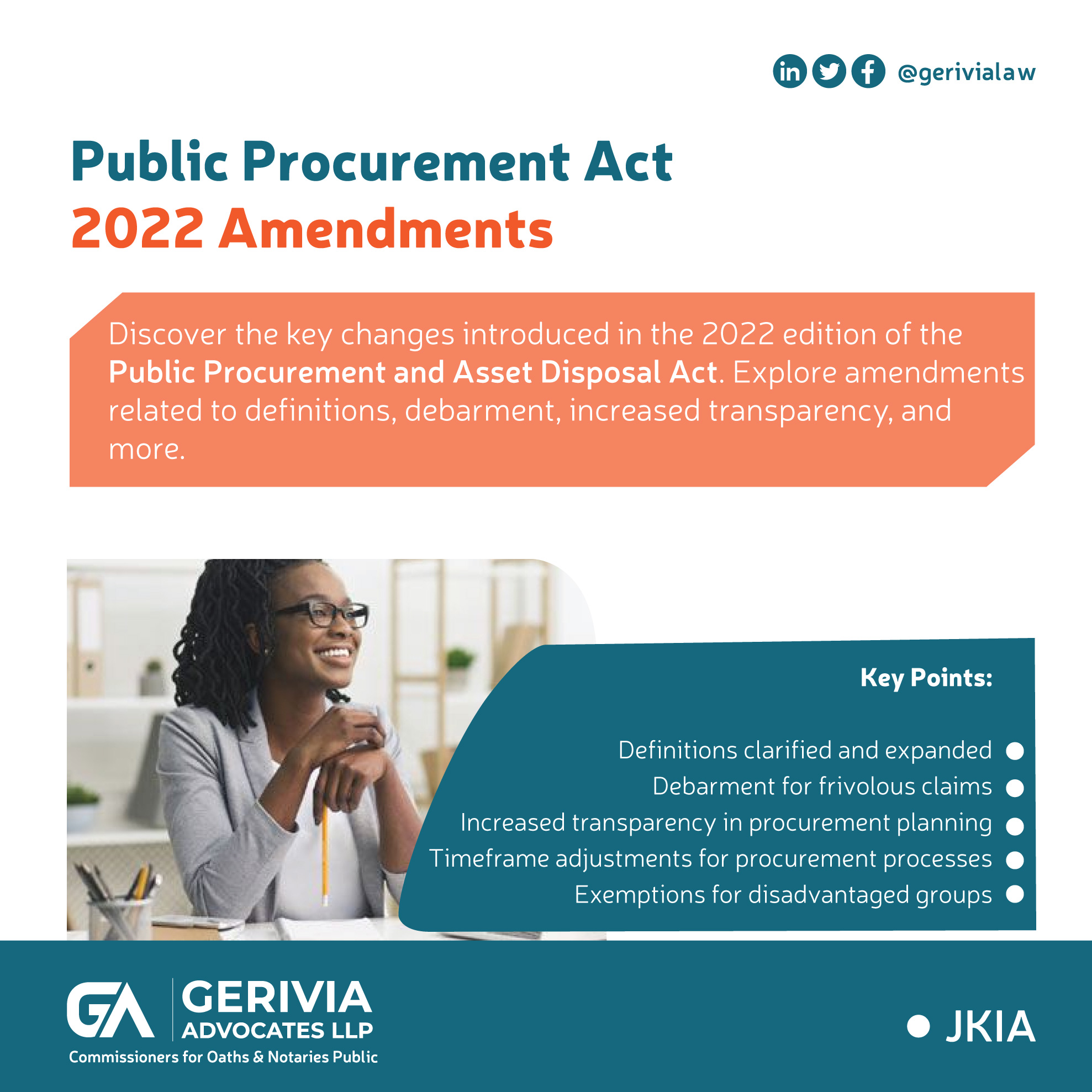In the Introductory Segment of the Gerivia Advocates LLP Road Safety Series, we provided some background information and statistics on road safety in Kenya and proposed focus on heavy commercial vehicles as a starting point for this series.
We also indicated that we will take a targeted approach, focusing initially on features to improve conspicuity of heavy commercial vehicles and installation of underride bars. These measures serve as a way of reducing road traffic accidents and/or mitigating the seriousness of accidents occasioned by heavy commercial vehicles, and especially in the event of crashes between heavy commercial vehicles and smaller vehicles.
In this article, we will propose the installation of front, rear and side metal bars on trucks and heavy vehicles to prevent underride upon collision with a smaller vehicle.
What is Underride?
Underride is an unfortunate situation whereby a passenger motor vehicle steers under a trailer of a heavy commercial vehicle upon collision due to the height of the trailer.
As a preventive measure, a metal bar meeting certain specifications is installed to reduce the space under the truck thus avert the risk of underride.
The proposed underride metal bar to be installed on the back and sides of the trailer will thus collide with the bonnet of the vehicle, prevent it from steering under the trailer and destroying the top part of the passenger motor vehicle and thus avoiding severely injuring the passengers.
This bar ensures that the stronger part of the passenger motor vehicle, which is the bonnet, is the one which comes into contact with the trailer instead of the delicate and crucial hood where the passengers sit.
This measure has been particularly utilized with much success in Canada which to date holds the standard on not only fitting metal bars on the rear and side of trucks, but also on ensuring that they are strong enough to endure impact and prevent the underride.
The United States of America passed Federal Motor Vehicle Safety Standard (FMVSS) No. 223 and No. 224 in 1993 which required that all trucks, semi-trucks and heavy vehicles having a height past 22 inches be fitted with strong and durable metal bars on the rear.
It should be noted at the onset that this measure is still unprecedented in Kenya and hence this Article will be based solely on foreign application of the technology. None of our detailed Traffic laws (the Traffic Act and Rules and the NTSA Act and its Regulations) provide for rear, front and side metal bars to prevent underride.
Underride Guards in other Jurisdictions
United States of America
Underride guards on medium and heavy trucks are governed by two standards in the United States. These are as implemented into the Part IV of the Code of Federal Regulations (CFR) – Vehicle and Traffic Safety.
The first standard was issued in 1953 by the Bureau of Motor Carriers, and applied to motor vehicles manufactured after 31st December 1952, covering straight trucks and trailers. It is referred to as the 1953 standard.
The underride guard standard for trailers and semitrailers was updated and strengthened in 1998 with the introduction of two more standards.
The 1953 Standard
This rule was applicable to straight trucks and trailers and required underride guards to be installed on vehicles with a minimum guard height of 30 inches from the ground, on trucks with cargo beds 30 or more inches off the ground and rear tires 24 or more inches from the rear of the cargo bed. Certain vehicle/body types were exempted.
The 1998 Standard (Federal Motor Vehicle Safety Standard (FMVSS) No. 223 and No. 224)
By amendment of the CFR in 1998, updates were made to the underride guard standard for trailers and semitrailers through FMVSS Nos. 223 and 224. The 1998 standard applies to trailers and semitrailers manufactured after 26th January 1998.
The first rule, FMVSS No. 223, sets the specific performance requirements that these rear impact guards must be able to withstand before they are installed onto new trailers and semi-trailers.
The second safety standard requires that most new trailers and semitrailers with a Gross Vehicle Weight Rating of 4,536 kilograms (kgs) (10,000 pounds (lbs.)) or more be equipped with a rear impact guard meeting the equipment standard. Requirements for the location of the guard relative to the rear end of the trailer are also specified in the vehicle standard.
The 1998 standard improved on a number of things most notably the reduction of the guard height standard of the underride guard from 30 inches above the ground to 22 inches above the ground.
The 1953 standard as noted only applies to straight trucks and trailers while the 1998 standard applies to the trailers and semi-trailers; in combination they help to prevent rear ended underride collisions that involve most trucks and trailers.
Effectiveness of Underride Guards
Notably, both safety standards in the USA only contain provisions for the installation of rear end guard, ignoring the front and side ends of the trailer or semi-trailer.
This has brought about questions on the effectiveness, or lack thereof, of the technology in actually preventing or reducing the fatalities due to underride of passenger vehicles.
The rear underride guard has thus faced opposition from the truck owners for example in North Dakota who argue as to its actual effectiveness in preventing underride while limiting the functionality of the vehicles especially in heavy commercial vehicles used in the loading and unloading of agricultural produce.
Through constant lobbying from concerned groups, in 2015, a proposed amendment to the CFR was proposed seeking the improvement of rear underride guards and the introduction of side underride guards into the Law in adoption of the standards in the Canada Motor Vehicle Safety Standard (CMVSS) for underride guards (CMVSS No. 223, “Rear impact guards,”).
Additionally, a whole Bill dedicated to this known as the Stop Underrides Act, was introduced in Congress to address this and other improvements that have been developed from the research on heavy vehicle related collisions on all ends. However, both are yet to be passed into Law.
Canada
Canada Motor Vehicle Safety Standard (CMVSS) for underride guards (CMVSS No. 223, “Rear impact guards,”) became effective in 2007.
The CMVSS No. 223 requirements are intended to provide rear impact guards with sufficient strength and energy absorption capability to protect occupants of compact and subcompact passenger cars impacting the rear of trailers at 56 km/h (35 mph).
As mentioned above, Canada is similar to the United States in terms of legislation on rear impact guards. The only difference is that Canada have extended the measure to include side underride protection guards while the US have stuck to the rear underride guard only.
Additionally, the rear underride guard used in Canada was improved to hold more force from a vehicle travelling at higher speed than the United States standard. As noted by Zeid Fadel and M.N.M Ansari in their Article, “A review on rear under-ride Protection devices for trucks” this measure is only effective if the metal bars are designed to be strong enough to repel the force of the vehicle’s bonnet upon collision at an average speed of thirty-five kilometers per hour.
Therefore, over the years, and especially in Germany and Canada, modifications have been made on the rear and side underride bars and with time, their effectiveness begun to show with the fatality rate significantly reducing upon car-truck collisions.This is however only dependent on the performance of the underride guard and its strength upon collision as was noted by Zeid Fadel and M.N.M Ansari in their Article cited above.

Proposed Implementation and Use of Underride Bars in Kenya
Turning our focus locally, we propose that NTSA could carry out scientific research, customized to the kind of vehicle materials and specifications typical to both heavy commercial motor vehicles and passenger motor vehicles in our Country but guided by the progressive scientific research already under way in Europe and the United States on this particular technology.
This way, NTSA can avoid re-inventing the wheel and learn from the mistakes and lessons learnt from these countries where the system has been gradually improved over time while also ensuring that any underride bars proposed for use in Kenya are fit for purpose locally.
NTSA could then ensure through regulation and standardization (in coordination with other relevant government authorities) ensure that all rear, front and side underride bars which are procured, manufactured and supplied locally meet the required quality standards.
This will ensure the quality of the metal bars to be installed with the NTSA tailoring the measurements and requirements (informed from the research) of the soon to be installed metal bars.
Samples must at least be put through a crash test to ensure that they are able to withstand a reasonable amount of simulated force mimicking real road collision scenarios. These should then be certified as standard to prevent adulteration as the strength of the metal bar is crucial to its effectiveness.
Having done so, and with the relevant regulations in place, the systematic installation of these standard metal bars should be done on new and imported heavy commercial vehicles. The existing heavy commercial vehicles should be required to have complied with the standard by a certain date, ensuring adequate notice to comply is given.
Enforcement could be further carried out on the roads to ensure that drivers keep the metal bars in clean and good condition to avoid wear or rust which would be counterproductive as the bars need to be strong enough to sustain the force of a collision.
Efficient sanctions and fines ought to be placed to ensure compliance as shall be seen in our proposed amendments to the law.
Practically, certain exceptions may be made with regard to fitness of purpose as may be determined at the discretion of the Authority.
Finally, we propose that the regular research into the improvement of this technology and the monitoring of its success through statistics is crucial to the effectiveness of the measure.
With continual advancements in technology and car manufacturing, it is crucial to alter the design of these bars if necessary, to suit any changes in passenger vehicle design. Scheduled call backs and retesting through these crash tests is also crucial to ensure relevance.
Final Thoughts
It is also important to point out that this proposed safety measure for heavy commercial vehicles needs to be implemented in tandem with other safety measures like those on increasing conspicuity of the vehicles for optimum results, which were highlighted in our previous article on Retro-Reflective Strips. That said, there is no doubt that if well implemented, installation of underride bars is still an important step towards improved road safety.
One of the main challenges to installation of the underride bars in the Kenyan context is likely to be opposition from stakeholders like the heavy commercial vehicle owners/operators owing to the extra costs entailed. There might also be challenges if the implementation process is poorly executed resulting to installation of poor quality and therefore ineffective underride bars such that there is no added benefit coming with the additional costs.
In response to these anticipated challenges, we submit that human lives have value and they should not be sacrificed at the altar of profitability. Lifesaving safety measures should therefore not be ignored based purely on installation costs; their value should be viewed from a wider lens and balanced against other considerations like the need to save lives and other savings made from reduced RTAs. Visit our website for the previous articles on the Gerivia Road Safety Series and other articles in our areas of practice. We urge all road users to do their part in promoting road safety, life is precious and is worth protecting.
The Gerivia Road Safety Series (Part I to V) was authored by George Karuthui Kamau, Susan Wairimu Munene, Sylvia Wambui Waiganjo and our former Trainee Advocate, Francis Kabuchu.




